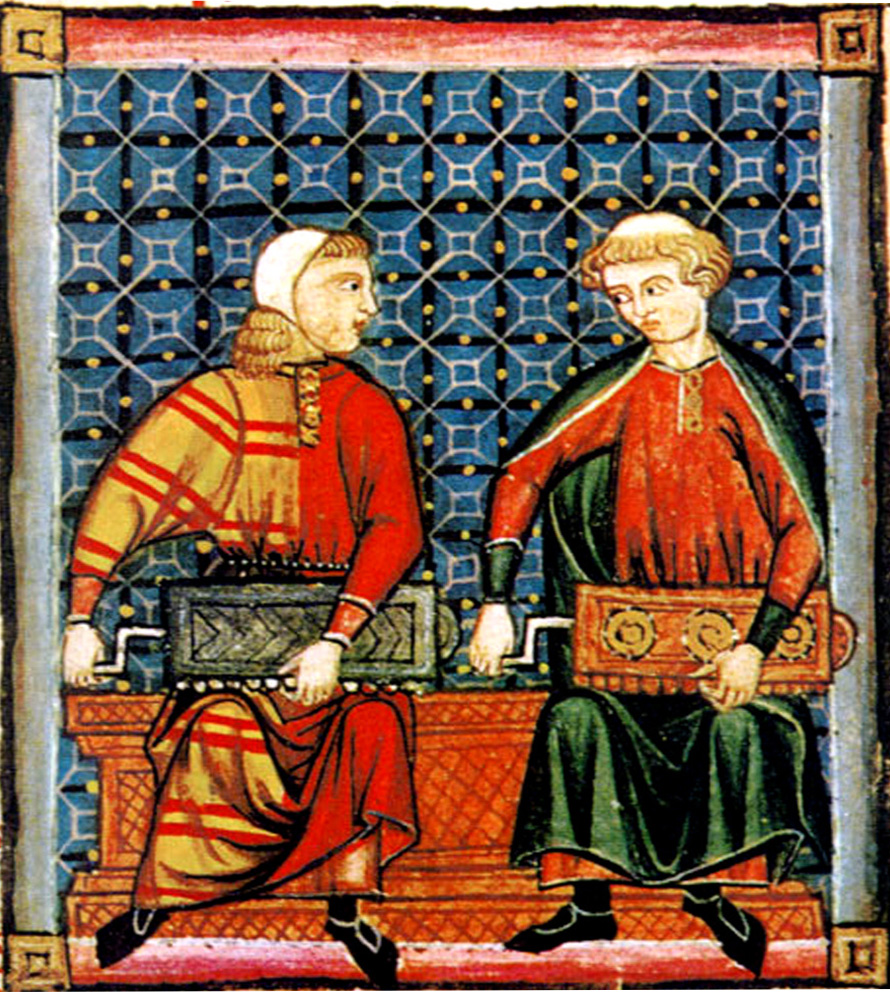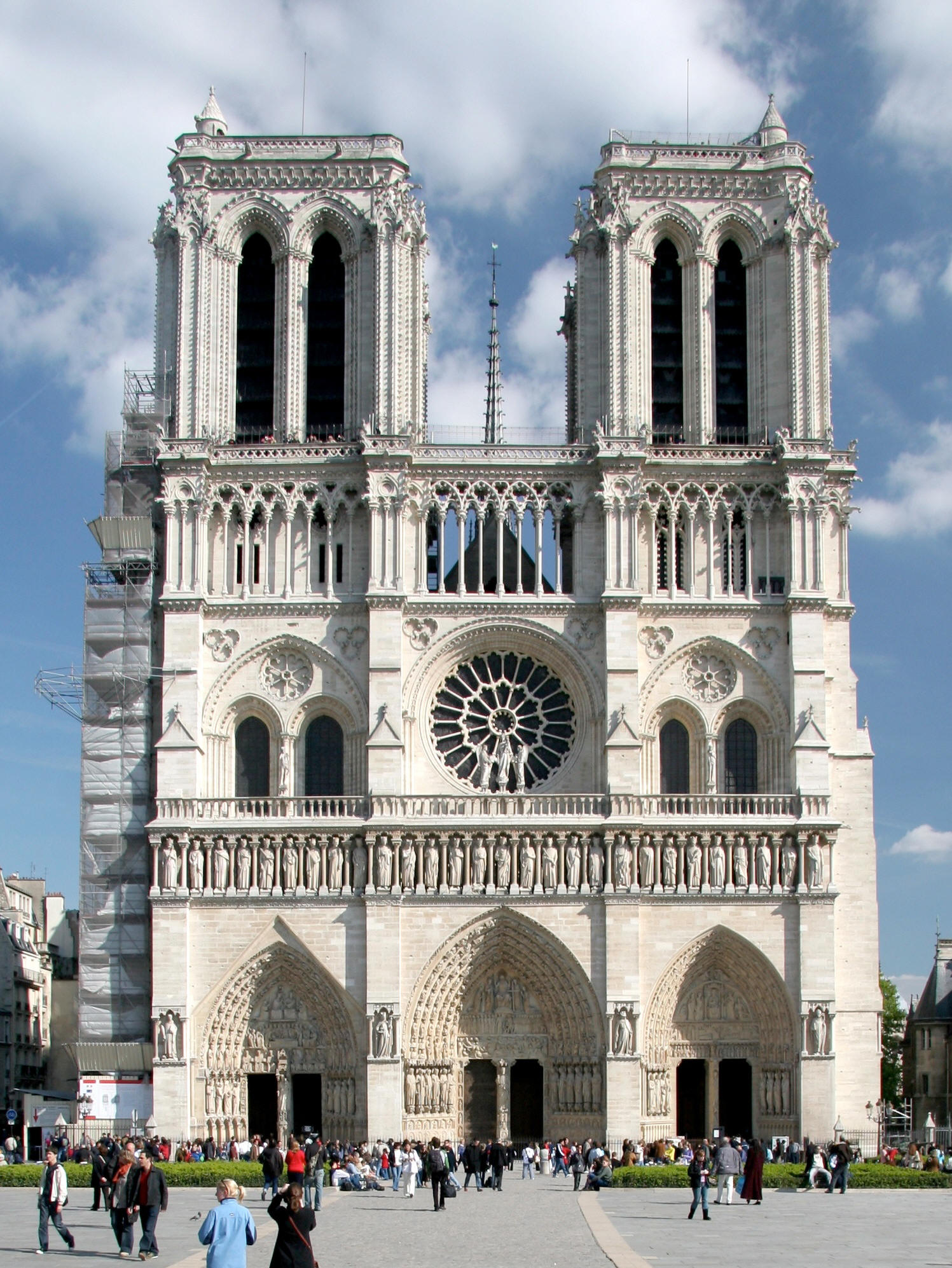If you want to download it CLICK HERE
Medieval music was an integral part of everyday life for the people of that time period. Music of the Middle AgesEdad Media was especially popular during times of celebration and festivities in convents and cathedrals as well asigual que, así como castles and palaces.
1. Religious vocal music:
Gregorian Chant
Religious music in the Middle Ages began to grow long before the emperor Constantine granted freedom of religious worshipcultos religiosos for Christians in the year 313. Since then, Christianism began to expand and organize its liturgy, in which singing was an essential element. The main driving force of this task expansion and unification of the liturgy was Pope Gregory the Great (590-604). Considered by tradition as the creator of the Christian singing, he actually did not invent it. He encouraged its organization as a way of strengtheningfortalecimiento the feeling of Christian unity.
Gregorian chant is a form of monophonic religious music in Western ChristianityCristianismo occidental that accompanied the celebration of Mass and the hours of Office. This vast repertoire of chants is the oldest music knownla música más antigüa conocida.
In the beginning the chants were learnt by the viva voce method. Later, in the 10th century, the first written repertoire appearedel primer repertorio escrito apareció appeared. The earliest notation used symbols called neumes: symbols that approximately reflect the pitch and duration of sound and whose writing derived from the movement of the hand when conducting the singing. By the 13th century, the neumes of Gregorian chant were usually written in square notationnotación cuadrada on a four-line staff with a clef.
Gregorian chant is, of course, vocal music. The relationship between text and music can be "syllabic" if there´s one syllable per sound; "neumatic" if there’s a group of notes per syllable and “melismatic” if there are five or six notes per syllable to over sixty in the largest melismas.
Chant is written in Latin and was normally sung in unison without instruments (a capella) so its texture is monophonic.There isn’t a beat or regular metric accent which doesn’t mean absence of rhythmausencia de ritmo: the text determines the accent whilemientras the melody determines the phrasingel fraseo.
Remember…
- Religious text written in Latin.
- Monophonic texture.
- There isn´t a beat or regular metric accent.
- Vocal music without instruments.
- Anonymous composers.
2. Secular music: troubadours and trouveres
Secular vocal music was developed at the same time as religious music under the protection of feudal lords. Troubadour is the generic term for poets and minstrelsjuglares who flourishedflorecieron (=aparecieron) in southern France and in Northern Italy from the 11th through the 13th centuries. Called trouveres in northern France and meistersingers in Germany, these artists converted storytelling"el contar historias" into an art, and often entertained huge crowdsgrandes multitudes at fairs, weddings and other medieval celebrations.
Normally they used new musical instruments, brought back totraidos a Western Europe from the Crusades, and their songs were written in the vernacular languages of each area. It is a type of vocal music with monophonic texture, with instrumental accompaniment and, due to its popular character, its rhythm is more marked.
Medieval times often evoke images of knights battling on muddy fields, dark and dreary castles, hunger and wars…caballeros batallando en campos embarrados, oscuros y húmedos castillos, hambrunas y guerras... but these Dark Ages also saw the birth of a romantic movement. French lords were poets and musicians and they wrote epic love poems about Courtly Love.poemas épicos de amor sobre el Amor Cortés.
Jongleurs were professional singers who performed these compositions from town to town.
3. Spanish medieval music
It´s known that the King wasn´t the only organizer of the collection however he was the composer of some of them. There are many pictures where we can find a lot of information about the daily lifevida diaria of the medieval society, the mix of the three cultures and the instruments. A cantiga is a poetry and musical composition about the miraclesmilagros of Mother Mary. Even thoughaunque the texts are religious we consider these compositions secular music. The musical form alternates between stanzas and the chorus.
Only instruments were used in secular music in the Middle Ages. The main string instruments were lute, harp and viola. In the woodwind we find the recorders, “chirimías” (like a oboe), bagpipesgaitas and trumpets. The percussion family was enormous and had a lot of variety.
Cantiga de Sta. María nº 100
Stella splendens (Llibre Vermell de Montserrat)
4. The birth of polyphony
In the late 9th century, polyphony (different melodic lines at the same time) appeared in Western Music. This fact marked the posterior development of music, and probably appeared spontaneously with the desire of decorating and enriching the Gregorian chant.
Primitive polyphony (9th - 12th centuries)
Polyphony is built by improvising upon the base of Gregorian chant. The main forms of primitive polyphony are:
Organum: it is the oldest and most rudimentary. It appeared in th late 9th century and consisted of adding a parallel voice of 4th or 5th below the Gregorian chant. The original Gregorian melody receives the name vox principalis, and the one that is added, vox organalis. In the melismatic organum, the Gregorian melody is developed in long values over wich the vox organalis sings long melismas.
Organum (Rex Caeli)
Ars antique (12th – 13th centuries)
The evolution of musical notation made the development of more complex polyphonic forms easier. Music abandoned the Gregorian free rhythm and began to measure it due to the need of synchronizing the different voices of the polyphony. In order to measure the durations of sound, musicians had to resortrecurrir to the old Greek rhythm by using their main metrical feet.
The most important musical centre of this period was the so called “Notre Dame School” in Paris. And its main composers were Leonin (1150 – 1180) and Perotin (1183 – 1238). New polyphonic forms appeared, like the motet, with several voices that move in different rhythms singing different texts.
Perotin, Viderunt omnes
Ars Nova (14th century)
Polyphony started liberating itself from the Gregorian chant in order to find a type of music closer to humanity, typical of an era that underwent the birth of urban societies and grew apart from medieval theocentrism. Secular music became increasingly important, making room for polyphonic forms of songs like the canon, the ballad and the chanson.
The most important composers were Philippe de Vitry (1291 – 1361), Guillaume de Machaut (1300 – 1377) and Francesco Landini (1335 – 1397).
World Music: Arabic Music
The category of Arabic music includes music from North Africa to Iran, on to Egypt, Saudi Arabia, Turkey, etc. The music differs quite a bit between one country and the next, but Egypt always provides a good reference for Arabic music. In Spain we can hear reminisces of Arabic music even today thanks to flamenco music.
Today, Arabic music has acquired different influences from western music, like the instrumentation (violins, saxophones, and electric instruments like the electric guitar and the synthesizer.)
The main characteristics of Arabic music are:
-Heterophony: The term used to describe music that has two very similar melodies that share many of the same notes, but one melody ornaments the other. This is a special shadow melody.
-Improvisation: Improvisation is always present in the creation of each piece. The beauty of the performance of improvisation consists of the improvised embellishments.
-Ornamentation: is an element based on the Arabic sound. Without ornamentation, the compositions lose their characteristic sound, or sense.
Arabic music is based on styles of melody and rhythm.
Melodic pattern: Arabic music uses a different scale than we do. In their scales, they use very small intervals, like quarter steps (as opposed to half steps). This is one of the most important characteristics of Arabic music.
Rhythmic Pattern: The same rhythmical pattern is used during the performance, but different instruments ornament the pattern. However, the basic pattern can always be identified easily.
Curiosities...
Arabs entered Spain around the 7th century and stayed for 8 centuries, until 1492. During these centuries, the Muslims lived together with the Christians and Jews. We call this time “Spain of the three cultures.” The music of this mixture is called andalusí music.
PRACTICE
Pequeño Paseo Medieval
Medina Siyasa
Cantiga de Sta. María
PRACTICE
Pequeño Paseo Medieval
Medina Siyasa
Cantiga de Sta. María




